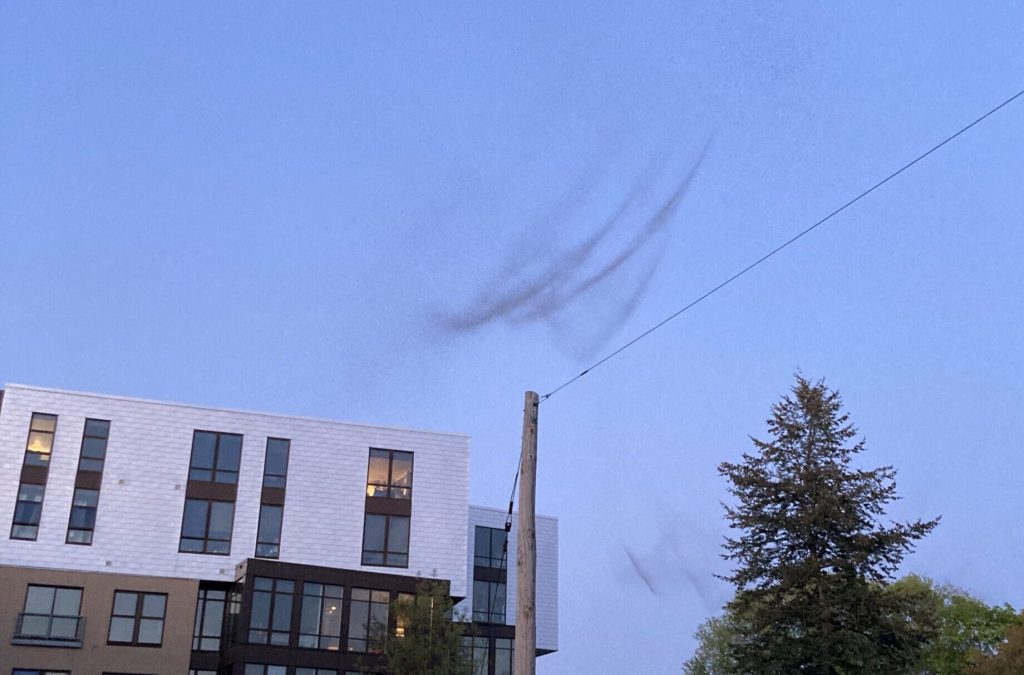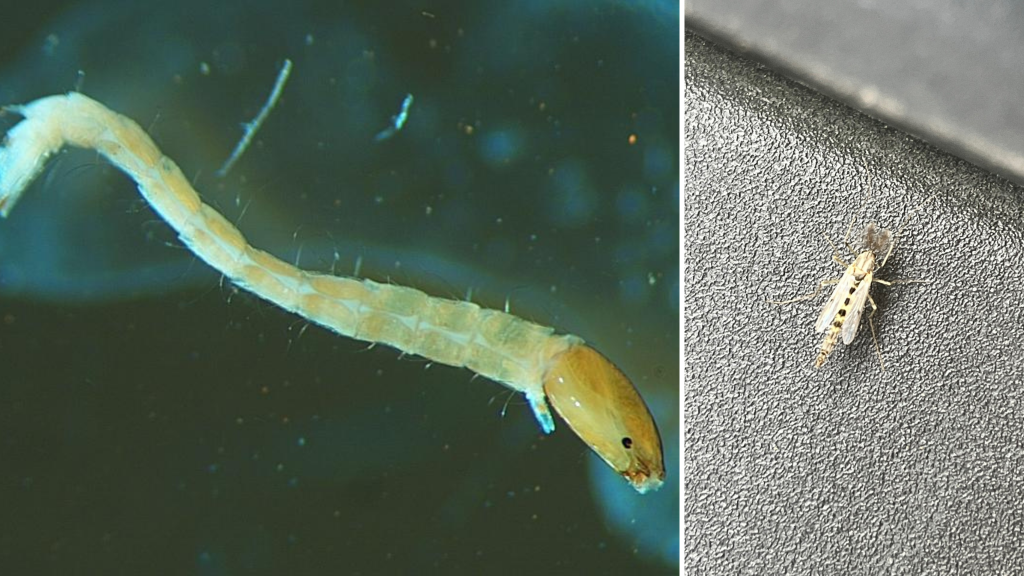What Are Those Pulsing Insect Clouds Over Wisconsin’s Lakes?
It's been a bountiful year for midges. What are they up to?

Midges, also known as lakeflies, form a mating plume in Madison, Wis. on Friday May 9. Anna Marie Yanny/WPR
After a trip out-of-state, Jake Vander Zanden had just returned to his home in Madison on Sunday when he saw them: thousands of midges, also known as lake flies, forming a pulsating plume above the trees.
“There are always midges coming out of the lakes, but most people don’t really notice them because they’re not very abundant. So it’s not really on the radar,” said Vander Zanden, who studies the biology of lakes as chair of the Center for Limnology at the University of Wisconsin-Madison.
“But on Sunday,” he continued, “I mean, they were at levels that were just really quite incredible.”
The strange sight is the very end of a yearlong lifecycle that Vander Zanden said is also tied to the health and unique character of lakes.
“The thing that we see flying around for several days to a week … it’s a very small part of their life,” he said. “They spend 95 percent of their lives, or more, living in the lakes, and they only spend a tiny fraction out amongst us.”

Left: a photo of a midge larvae taken through a microscope. Right: an adult midge. Photos courtesy Jake Vander Zanden
Midges, or chironomids, are small flies that develop primarily in lakes. They are not mosquitos and not mayflies, which also come out this time of year.
They’ve hatched in great numbers across the world, including in Madison and off Lake Michigan in Milwaukee. Vander Zanden said he grew up watching midge hatches off Lake Winnebago in northeast Wisconsin every year around this time, too.
The presence of midges in a general sense can tell a community about the health of its lakes, Vander Zanden said. They offer food to fish, spiders and birds, and they’re harmless to humans.
But Vander Zanden says he’s not so sure why Lake Monona has seen such an exceptional hatch this year. The local midge population increased after Madison lakes were infested by zebra mussels about a decade ago, he said. Maybe this year, there were fewer fish around to prey on eggs or there were more food sources.
“Some kind of perfect storm of conditions in the lake has just allowed there to be a really good, good hatch,” he said.
Vander Zanden said he’s looking forward to trying to work backward to solve the mystery of the “Mother’s Day Midge Hatch of 2025.”
And he has a message for Wisconsinites who might encounter swarms while out walking, running or paddling along the lakes this spring.
“I would just encourage people to try to find the fascination in them,” he said.
Wondering about those pulsing insect clouds by Wisconsin’s lakes? was originally published by Wisconsin Public Radio.
If you think stories like this are important, become a member of Urban Milwaukee and help support real, independent journalism. Plus you get some cool added benefits.





















